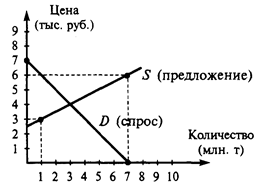Digital Rights Management
Suppose you purchase a music CD of your favorite recording group. Now you want to transfer the file to your computer, rip the best tracks, and transfer them to your portable audio player. But wait! That CD is copy protected and your computer CD drive won’t read it. You purchased the disk. Can’t you listen to the music on any device you choose? The answer is “yes” and “no”. Yes, copyright law gives you the right to make copies for your personal use and transfer works into a format that works on your equipment. However, the growing pervasiveness of digital rights management may curtail your ability to exercise these rights. It is easy to copy digital material. Before the dawn of the digital age, copies produced by analog equipment, such as photocopiers and audio tape dubbing machines, were of considerably poorer quality than the originals. Copies of digital materials, however, are indistinguishable from the originals, and that factor has encouraged an alarming increase in software, music, and movie piracy. The battle against piracy took shape as a concept called digital rights management (DRM), vigorously supported by Microsoft and backed by a host of industry leaders. Today, digital rights management encompasses a variety of technologies implemented by copyright holders, such as record companies and software publishers, which restrict the usage of digital material. DRM systems address piracy by using a variety of technologies for manipulating data, media, devices, and transactions. Software copy protection techniques include reading data written to places on a disk or CD-ROM that the drive cannot normally access, using hardware that must be plugged into the computer when the software is run, requiring a serial number during the installation process, and using Internet product activation that checks the validity of an installation. Most software copy protection schemes have proved to be costly for publishers or inconvenient for consumers. Many consumers are not aware that they pay a surcharge for every blank audio tape or CD they purchase. Collected revenues from this surcharge go to music publishers to compensate recording artists for the fact that many people duplicate works without authorization. Most of today’s music download sites encrypt music files and embed codes that limit the number of times they can be copied and the devices on which they can be played. Various formats used by different sites are not compatible with each other and require different players. Music from several different download sites cannot be compiled into a single playlist. It is becoming more common for music CDs to use play-protection technology designed to make the CD unusable in devices, such as computer CD-R drives, that can also be conveniently used for duplicating CDs. Consumers who purchase these protected CDs find that they cannot be copied to a computer hard disk, then ripped to produce an MP3 file for a portable audio player. Commercial movie DVDs use CSS (Content-Scrambling System) encryption to make DVDs playable only on authorized DVD players equipped with decryption key circuitry. Movies purchases in the United States and Canada cannot be played on devices manufactured for the European or Asian markets. Despite DRM technologies and the inconveniences imposed on consumers, digital piracy remains rampant. According to an article about digital rights management posted on Wikipedia, “To date, all DRM systems have failed to meet the challenge of protecting the rights of the rights holder while also allowing the use of the rights of the purchaser. None have succeeded in preventing criminal copyright infringement by organized, unlicensed, commercial pirates.” Current DRM technologies do not seem able to distinguish between pirates and legitimate consumers. As a result, DRM technologies essentially pose restrictions on consumers that go beyond the intended limitations of copyright law. The current status of DRM seems to conflict with the original intent of copyright law to allow consumers to manipulate and copy works for their own use. Can technology eventually offer a solution that prevents piracy, but allows individuals to exercise their rights to fair use of copyrighted materials?
|




